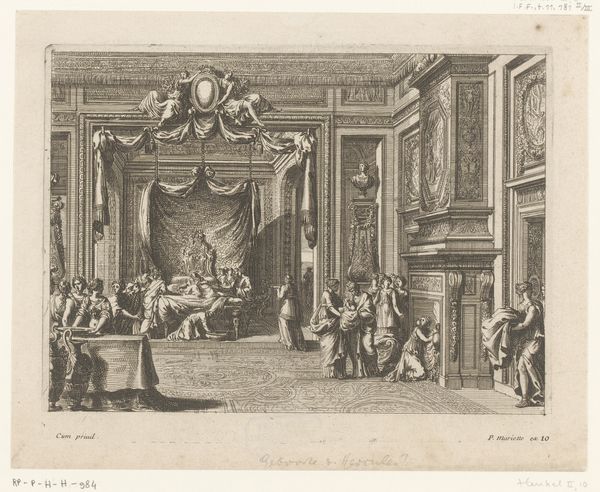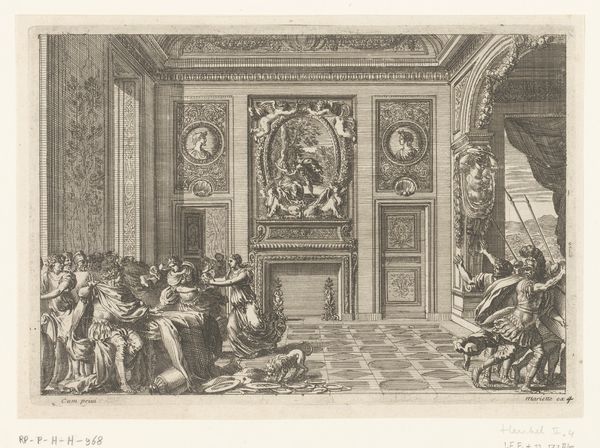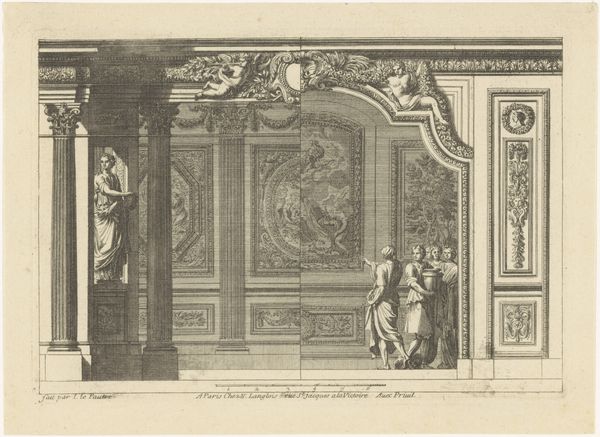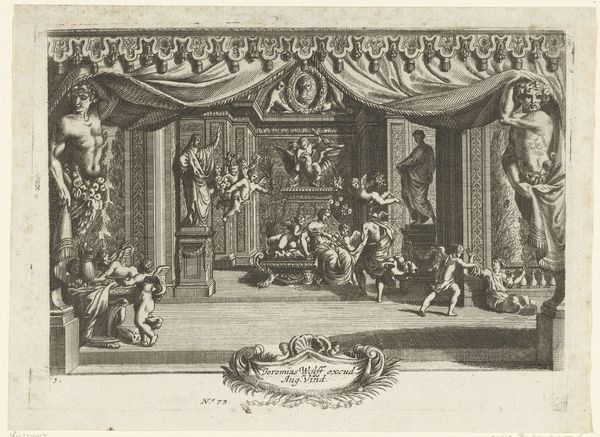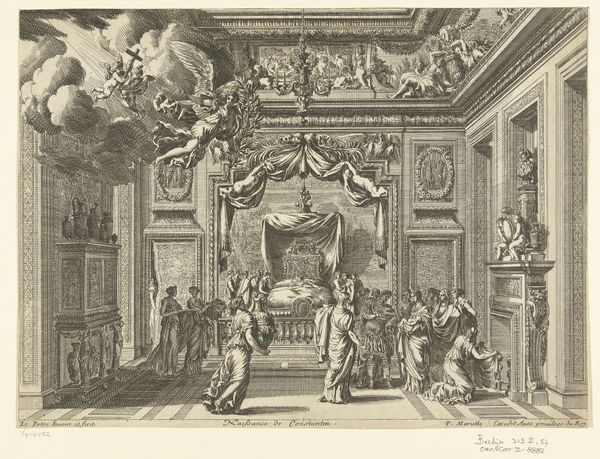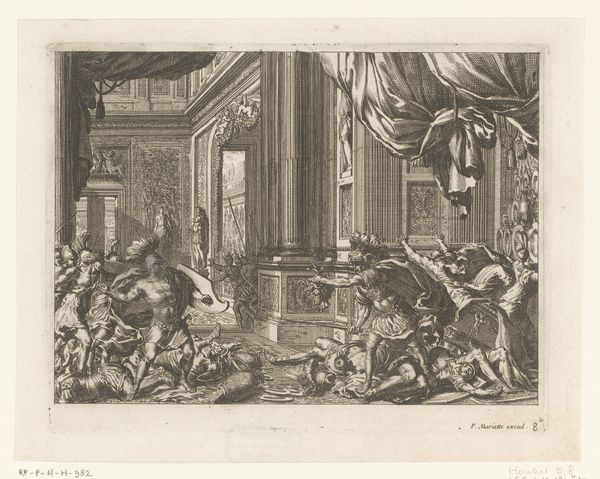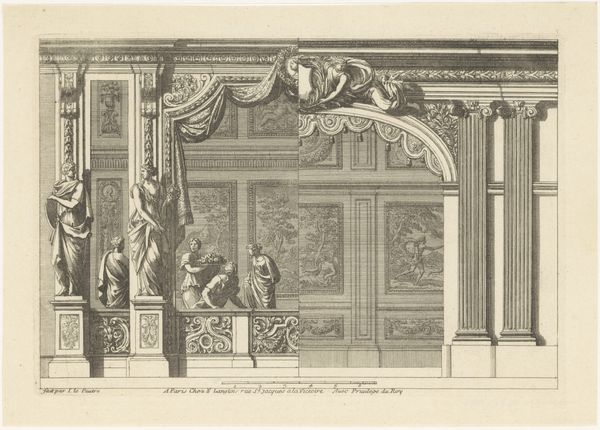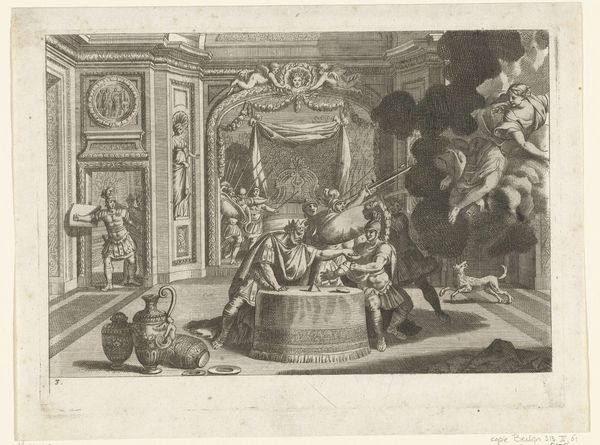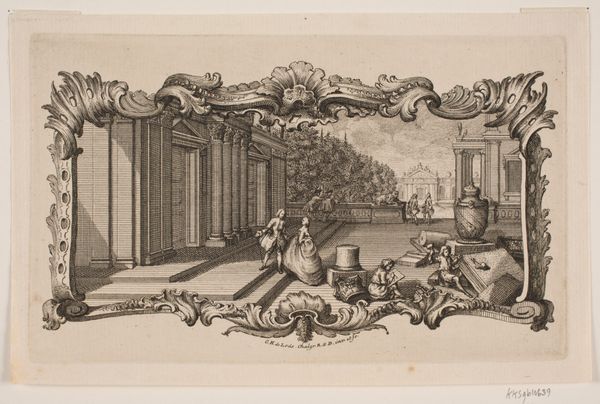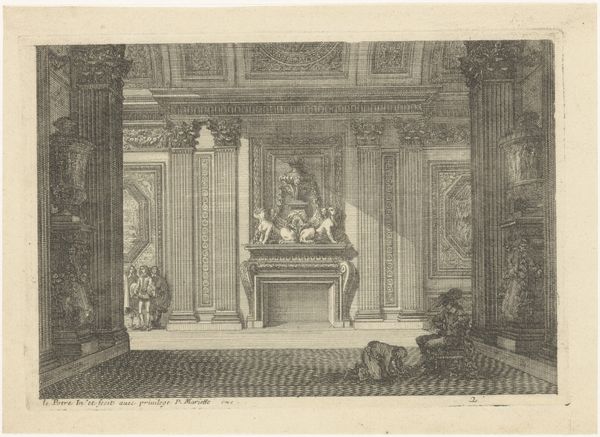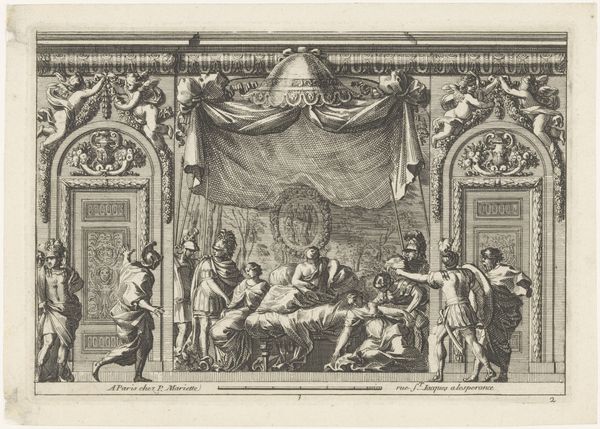
print, engraving
allegory
baroque
figuration
line
history-painting
engraving
Dimensions: height 165 mm, width 216 mm
Copyright: Rijks Museum: Open Domain
Editor: Here we have Jean Lepautre's "Pygmalion in his Studio," an engraving created sometime between 1628 and 1682, now at the Rijksmuseum. The detail is astounding, and the whole scene feels very staged, like a play within a print. What do you see in it? Curator: It's fascinating to consider this image as a product of its time. The scene, though depicting a mythological moment, is steeped in the visual language of Baroque culture and its preoccupation with allegory. The composition, featuring cherubs, classical sculptures, and framed artworks, reflects the social elite's engagement with collecting and the arts. Notice how Pygmalion isn't just sculpting; he's staged within an elaborate interior, thereby linking artistic creation to social status. Editor: So, it’s less about the myth itself, and more about showing how art and status are connected? Curator: Precisely! Lepautre is highlighting the way the arts were consumed and how they participated in creating and maintaining cultural identity within specific social structures. Even the medium—a print—suggests dissemination and widespread engagement, even if primarily amongst the upper classes. Does this influence your view of the artwork's intention? Editor: Definitely. Knowing it’s connected to social status makes me see the composition in a new light, recognizing that it shows more than artistry. Thanks for your historical point of view! Curator: It's about understanding the multilayered nature of art, that the visual rhetoric tells not only a story but also makes the statement of values.
Comments
No comments
Be the first to comment and join the conversation on the ultimate creative platform.
